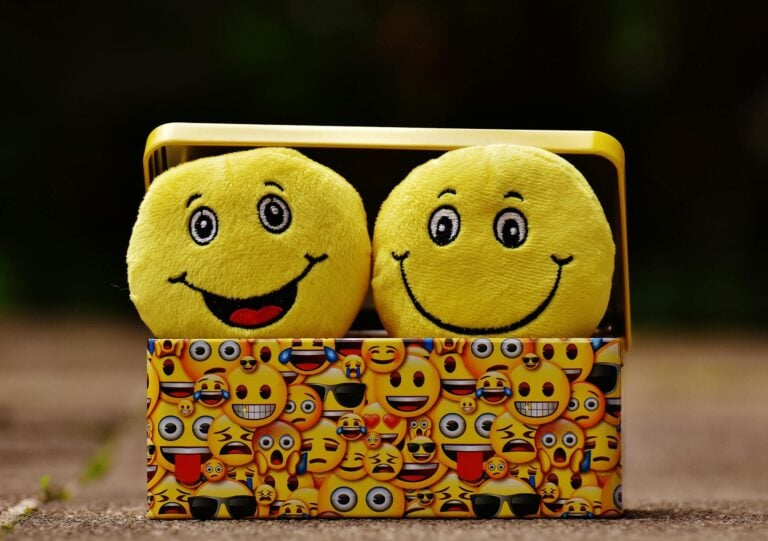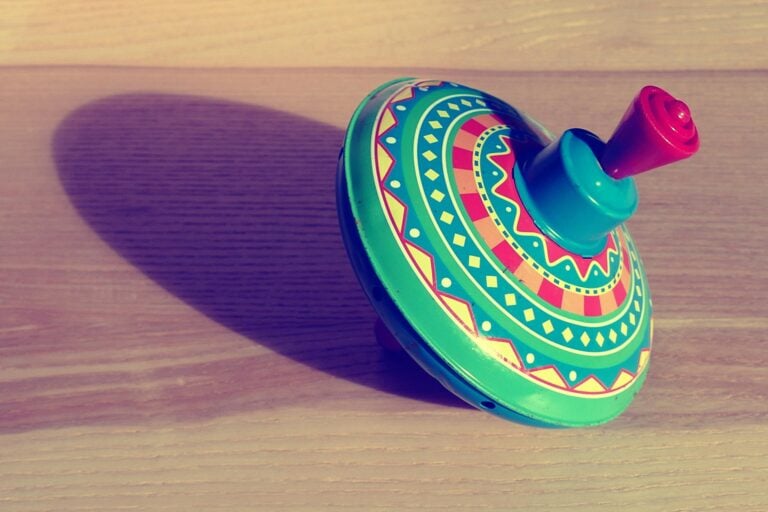When insecure attachment styles collide, relationships can become a battleground of unmet needs and emotional turmoil. Let’s dive deeper into the challenges faced by couples with mismatched attachment styles. In my last post, I discussed common pairings in our Couples Therapy Intensives, where at least one partner has the most common and healthy attachment style: Secure.
In this post, I explore various combinations, and specific pairings emerge as challenging or even distressing. These give rise to a painful, engrossing dance I call the “Toxic Tango.” These scenarios don’t necessarily signify doomed partnerships but shed light on predictable hurdles without secure attachment.
What do I mean by a Toxic Tango?
In the absence of secure attachment, some combinations of attachment styles offer predictable struggles and hurdles that we see in couples therapy. That doesn’t mean these aren’t loving relationships or that these relationships are doomed to failure. It’s just that certain combinations are fraught with predictable peril. Fortunately, we have the science of human attachment to help us towards more secure bonds.
Understanding relationships often involves dissecting attachment styles and their interplay.
We will talk about Disorganized, Anxious, and Avoidant attachment. It is worth noting that Mary Ainsworth’s typology divided babies into “Secure” and “Insecure,” some couples therapy researchers have stuck to this distinction for simplicity.
The Dance of Attachment
Couple Combinations
Some intriguing patterns emerge when we look at the distribution of attachment styles in couples. Using Ainsworth’s typology, several researchers found the following breakdown: Secure-secure pairings are most common (50-58%), followed by secure-insecure (30-39%), and insecure-insecure (11-20%).1, 2, 3 Secure partners tend to report higher relationship satisfaction and more positive interactions.
The Anxious-Anxious Couple
The Insecurity Amplifier
Shorthand for the Anxious style: Characterized by a strong desire for closeness and intimacy, coupled with intense fears of rejection and abandonment; May exhibit clingy or demanding behavior in relationships.
When two anxiously attached individuals come together, their relationship can become a hotbed of insecurity and emotional reactivity.4 Both partners may constantly seek reassurance and validation, leading to a cycle of anxiety and doubt. Anxious couples may struggle with trust and jealousy as each partner’s fear of abandonment amplifies the other’s insecurities. Such relationships can be intense and passionate, but the constant emotional turmoil may affect both partners’ well-being.
This is a particularly challenging toxic tango. Both Anxious partners are preoccupied with their own needs. They often lack a sense of where their partner is coming from. Like the hungry ghost or preta, in ancient Hindu mythology, they have a small mouth and a large belly. Their suffering continues as they have no way to satiate their appetite. They “need” without end.
This can sometimes be a very immature, almost adolescent pairing. There is an abundance of angst and drama with the Anxious/Anxious couple and a deficit of humor and patience.
This pair can burn out quickly as it collapses into a sinkhole of mutual dissatisfaction. With science-based couples therapy and a high degree of motivation, couples on the milder end of the Anxious/Anxious continuum can acquire sufficient skills to validate and accept support to meet each others’ needs adequately. They must learn how to make themselves and their partner feel safe and do more of it. They must learn what makes each partner feel insecure and do less of it.
Like a virtuous circle, the anxiety calms down as each relaxes into the love of the other. Over time, minor missteps have a minor impact, and they settle into a happier relationship. Combined with learning relaxation or mindfulness techniques, these couples can make steady progress.
The important thing to remember is that childhood attachment injuries are lingering and follow us into adulthood. We select partners who we feel are best suited to help us to love, despite our limitations.
Anxious Partners with Avoidant Partners
Shorthand for the Avoidant style: Characterized by a strong sense of independence and self-sufficiency. They may downplay the importance of relationships and avoid emotional intimacy. Can appear aloof, distant, or emotionally detached.
The Pursuit-Withdrawal Dance
Picture an anxiously attached partner craving closeness and connection and an avoidant partner pulling away. This pairing often leads to a frustrating cycle of pursuit and withdrawal.5 Stereotypically, we see a woman seeking support and validation from a man who likes attention (but only when he wants such attention). Still, he becomes cold, distant, or rejecting when he doesn’t.
The anxious partner’s fear of abandonment triggers the avoidant partner’s fear of engulfment, creating a self-perpetuating loop.
Such couples may struggle with commitment, as the avoidant partner’s need for independence clashes with the anxious partner’s desire for intimacy. Over time, this pattern can erode trust and satisfaction, challenging long-term stability.
They may resemble the “hostile” couple John Gottman described in his typology.
The Gottmans argue that every couple must determine for themselves how close is “too close” and how far away is “too far away,” which is also impacted by changing life circumstances.
One could argue that the Anxious partners are love’s most fervent advocate, championing its cause at every turn. In contrast, their Avoidant-Dismissive partner plays the role of the skeptical opposition, forever questioning the necessity and validity of such grand displays of affection.
Before you think this marriage is doomed, it may not be a divorce that is the bad news for this marriage, but remaining miserably married, perhaps indefinitely, according to the research.
The Avoidant believes there is nothing wrong with them. They are independent and can take care of themselves. They’ve learned early that people are unreliable and that it is safer to rely on yourself alone. Rather than being outright rejecting, however (which would not have launched the relationship to begin with), they go hot and cold. First, they give attention, then reject any effort to connect. This is often in response to their partner’s behavior: When the Anxious partner pulls away, the Avoidant partner invites closeness, reactivating the hope that the Anxious will finally meet their needs. Then, once closer, the Avoidant distances once again.
Deep connection is frightening to a Dismissive, even if they never admit it. Relying on people from their past, like their parental figures, has become a painful disappointment. So, while they want to connect, sometimes they want badly to do so, but they can’t own or act upon that need. They watch from a safe distance while their Anxious partner overtly expresses that desire. Then they resent them for it.
But it is the message these Avoidants send that is so harmful and toxic to their mates: “I find you annoying and clingy and wish you would leave me alone.” This message works on the deep-rooted anxieties of their partner’s fear of rejection. The harder this anxious partner attempts to gain their attention, the more rejecting their Avoidant spouse becomes.
The Anxious also has a history of dashed hopes and dreams of reliable support. These hot-cold early attachment lessons die hard. They sometimes cling to an entirely inappropriate partner and try to twist themselves or their partner into something they can work with.
The Avoidant wants to be wanted but refuses to want. However, their Anxious partner would have no clue that the attention they offer is wanted at all. They are given the opposite message. “Leave me alone until I decide to reach out.” And the waiting is tortuous for the Anxious spouse. Unable to hold back any longer, they reach out, only to meet an angry response: “I was about to reach out to you, but now you blew it!”
The Anxious Preoccupied spouse may protest, but at the end of the day, they aren’t secure enough to leave to find something better. But let’s not be too quick to blame their obvious insecurities for remaining in such relationships: Intermittent reinforcement schedules are the strongest form of learning. The early “good times” leave out the carrot that if the Anxious partner changes in some unspecified way, these happy times might return. The bad times make the good times even more desirable.
We often see Anxious partners who are convinced their Avoidant lover is “wounded” and needs their love. This ignores their own unmet needs and painful experiences and keeps the focus on their Avoidant’s needs, perpetuating the cycle.
Covert-Narcissistic Marriages?
The dynamics between an Anxious and Avoidant couple can be strikingly similar to those in which one partner is narcissistic. The intermittent reinforcement schedule, where the Avoidant partner alternates between giving attention and rejecting efforts to connect, mirrors the hot-and-cold behavior often exhibited by narcissists.
In both cases, the Anxious partner is left constantly seeking validation and approval, while the Avoidant or narcissistic partner withholds it, creating a cycle of emotional turmoil. The Avoidant partner’s sense of superiority and doubts about the “worthiness” of their partner mirrors the narcissist’s inability to love or express empathy. Their tendency to watch from a safe distance while their Anxious partner overtly expresses their desire for connection is similar to a narcissist’s tendency to view their partner’s emotional needs as a weakness.
However, if the chronic attempts to gain validation and approval from the Anxious partner stop, the “hot” part of the hot-cold cycle will kick in with love-bombing, once again holding out hope that true love is possible. Moreover, the toxic messages sent by the Avoidant partner, such as “I find you annoying and wish you would leave me alone,” play on the AP partner’s deep-rooted fears of rejection, much like a narcissist’s manipulation tactics.
The Avoidant partner’s refusal to want, despite craving attention, is similar to a narcissist’s need for admiration and their simultaneous disdain for their partner’s attempts to fulfill that need.
The resilience of this couple, despite their unhappiness, can be attributed to the Anxious partner’s insecurity and inability to leave the relationship, which is often the case in narcissistic marriages as well. The Anxious partner may feel trapped after years of emotional abuse, believing that they are not worthy of a better relationship or that they can change their partner’s behavior through their efforts.
In both cases, the relationship dynamic is characterized by a painful and dysfunctional interaction that can persist indefinitely without proper intervention. Given the narcissists’ reluctance to seek out individual therapy, the anxiously attached spouse looks to couples therapy, hoping that effective couples therapy will break the pattern and allow the partner to “care.” Recognizing these similarities can help individuals in such relationships understand the toxic nature of their partnership and seek the necessary help to break free from the cycle of emotional abuse.
Curiously, this couple is the most resilient in maintaining a long-term marriage after the healthy Secure-Secure pairing. Neither are happy, however. Without a combination of individual therapy for the NPD and effective couples therapy, their painful interaction can go on forever. This pairing is commonly seen in toxic tangos.
Anxious with the Disorganized:
Shorthand for the Disorganized Style: Characterized by a desire for close relationships combined with a fear of intimacy and trust issues; May exhibit unpredictable or inconsistent relationship behavior, oscillating between wanting closeness and pushing others away.
Navigating Emotional Chaos
When an Anxiously attached individual pairs with a partner who has a Disorganized attachment style characterized by both avoidance and anxiety, the relationship can be a rollercoaster of intense emotions.6
Disorganized individuals often have a history of trauma or inconsistent caregiving, leading to a fear of both abandonment and intimacy. This can leave their Anxious partner feeling confused and unsupported. Such couples may struggle with communication, as the Disorganized partner’s mixed signals and unpredictable behavior can exacerbate the Anxious partner’s insecurities.
When the Anxious partner is paired with a Disorganized partner, we typically see this type of dynamic: The Anxious partner will continue to reach out to connect and seek secure validation, but the Disorganized type is far less likely to offer them anything that can translate into even marginal marital satisfaction.
The Disorganized partner is far less likely to ignore the Anxiously attached mate than the Avoidant partner is. Instead, like a game of ping-pong, the Disorganized partner will feast in moments of attachment before creating hostile conditions that starve or reject their Anxious spouse. The Anxious partner becomes exhausted by all the Disorganized partner’s perpetual warding off, grateful indulging, followed by rejection. This pairing is a seesaw of misery.
The closer the couple gets, the more anxious and threatened the Disorganized partner becomes. The more successful the Disorganized partner is in warding off the Anxious partner’s bids for connection, the more anxious and insistent the Anxious partner becomes. It is an understatement to suggest that the Disorganized partner sends mixed messages. The suddenness of the shift from inviting closeness and angrily rejecting it can be dizzying.
This is a far less resilient combination than the Anxious and Avoidant pairing, but it’s one of the relationships not uncommonly seen in couples therapy. Without a deeper understanding of trauma and the Disorganized partner getting help for such traumatic histories (no, the Anxious partner cannot heal them with love…), the pain will continue.
Disorganized with the Avoidant:
Pairing an Avoidant individual with a Disorganized partner can be particularly challenging. The Avoidant partner’s need for distance may trigger the Disorganized partner’s fear of abandonment, leading to a push-pull dynamic.7 The disorganized partner’s unpredictable behavior and emotional outbursts may overwhelm the Avoidant partner, causing them to withdraw further. However, the disorganized person is more ambivalent about attaching and may go for longer stretches before trying again. If this kicks up the anxieties of the Avoidant, they may not be met with a warm reception when the Avoidant tosses emotional crumbs their way. They might meet disinterest, rage, a neutral response, or a warm reception.
Such couples may struggle with trust and communication, as both partners’ defenses prevent them from forming a secure emotional bond.
Again, the Disorganized need to seek therapeutic help for their past trauma, but this is usually looked upon warily. The Disorganized might view therapy as “kicking up the dirt” instead of understanding that they are living in pain either way; however, therapy offers them a brighter future than more of the same. The Avoidant can understand the critical role they play in intensifying the intense reactivity of the Disorganized partner and look to resolve their intimacy issues.
Avoidant with the Avoidant:
This pairing may downplay the importance of relationships and avoid emotional intimacy.
Avoidants often pair off with either Secure or Anxious partners. They tend not to pair with other Avoidants.
What Avoidant partners have in common is their genius for avoidance. The Avoidant won’t have their ego fed the way an Anxious spouse would. Each Avoidant partner has learned to live without love, so they both act like they have no needs.
This pair has a hard time even getting together in the first place. After the first offense, they are unlikely to continue to answer the phone or make a return call.
The Avoidant needs someone with needs or demands to react to. Both can appear aloof, distant, or emotionally detached. I have seen these types of couples, although rarely. They may both have strong narcissistic tendencies, and the very essence of the other flatters their sense of vanity and pride.
I have also seen neurodiverse couples that appear to be Avoidant-Avoidant. When the neurotypical partner has done something that violates the ego or relationship agreement of the other, the Avoidant becomes incensed by what feels like an assault. They seek to punish their Autistic spouse for the offense.
Most often, the Avoidant can’t admit to “wanting” the marriage, but they do. They present in a very ambivalent manner for couples therapy. They want the therapist to join them in the punishment (a no-go for the therapist), and as a runner-up have the therapist “buy in” to the hopelessness of it all (Discernment Counseling). They can then become enraged that the therapist isn’t more “invested” in helping them both heal and repair their marriage. Meanwhile, the Autistic partner is left puzzled, wondering why the Avoidant can’t simply be allowed to “beat them up” if that’s what he or she needs to do.
This pairing tends to live very disconnected, separate lives. Sex tends to be impersonal, and the overall tone of the relationship is that they tend to keep each other at arm’s length. But they function as “beautiful people” or at least highly successful ones that complement each other in some way that is vanity-pleasing to the other.
This is a rare pair.
Implications for Couples and Therapists
So, what can couples and therapists take away from attachment research? First, understanding your own and your partner’s attachment style can provide a roadmap for navigating relationship challenges. Insecure individuals may need extra reassurance and support, unlike secure partners who can model healthy communication and emotional regulation.
Second, attachment styles are not set in stone. With self-awareness and effort, individuals can develop “earned security” by learning to trust, communicate openly, and regulate their emotions.8 Couples therapy can provide a safe space to explore attachment wounds and build new, more secure bonds.
Closing
Unraveling Toxic Tangos involves dissecting the intricacies of attachment styles. By shining a light on our earliest bonds and how they shape our adult love lives, we can cultivate greater compassion for ourselves and our partners.
Even couples with mismatched attachment styles can learn to dance in sync and thrive with the right tools and mindset. Although these configurations may seem doomed, with dedicated therapy and a profound understanding of their dynamics, couples can navigate toward mutual satisfaction and connection despite their challenging beginnings.
References
- Kirkpatrick, L. A., & Davis, K. E. (1994). Attachment style, gender, and relationship stability: A longitudinal analysis. Journal of Personality and Social Psychology, 66(3), 502-512.
- Feeney, J. A. (2002). Attachment, marital interaction, and relationship satisfaction: A diary study. Personal Relationships, 9(1), 39-55.
- Molero, F., Shaver, P. R., Ferrer, E., Cuadrado, I., & Alonso-Arbiol, I. (2010). Attachment insecurities and interpersonal processes in Spanish couples: A dyadic approach. Personal Relationships, 18(4), 617-629.
- Shaver, P. R., Schachner, D. A., & Mikulincer, M. (2005). Attachment style, excessive reassurance seeking, relationship processes, and depression. Personality and Social Psychology Bulletin, 31(3), 343-359.
- 11. Feeney, J. A. (2003). The systemic nature of couple relationships: An attachment perspective. In P. Erdman & T. Caffery (Eds.), Attachment and family systems: Conceptual, empirical, and therapeutic relatedness (pp. 139-163). Brunner-Routledge.
- Paetzold, R. L., Rholes, W. S., & Kohn, J. L. (2015). Disorganized attachment in adulthood: Theory, measurement, and implications for romantic relationships. Review of General Psychology, 19(2), 146-156.
- Riggs, S. A. (2010). Childhood emotional abuse and the attachment system across the life cycle: What theory and research tell us. Journal of Aggression, Maltreatment & Trauma, 19(1), 5-51.
- Roisman, G. I., Padrón, E., Sroufe, L. A., & Egeland, B. (2002). Earned-secure attachment status in retrospect and prospect. Child Development, 73(4), 1204-1219.







